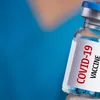Oxford COVID-19 vaccine: AstraZeneca manufacturing error clouds study results
A statement describing the error on Wednesday came days after the company and the university described the shots as "highly effective" and made no mention of why some study participants didn't receive as much vaccine in the first of two shots as expected.
AstraZeneca and Oxford University have acknowledged a manufacturing error that is raising questions about preliminary results of their experimental COVID-19 vaccine.
A statement describing the error on Wednesday came days after the company and the university described the shots as "highly effective" and made no mention of why some study participants didn't receive as much vaccine in the first of two shots as expected.
In a surprise, the group of volunteers that got a lower dose seemed to be much better protected than the volunteers who got two full doses.
In the low-dose group, AstraZeneca said, the vaccine appeared to be 90 percent effective. In the group that got two full doses, the vaccine appeared to be 62 percent effective. Combined, the drugmakers said the vaccine appeared to be 70 percent effective.
But the way in which the results were arrived at and reported by the companies has led to pointed questions from experts.
The partial results announced on Monday are from large ongoing studies in the UK and Brazil designed to determine the optimal dose of vaccine, as well as examine safety and effectiveness. Multiple combinations and doses were tried in the volunteers. They were compared to others who were given a meningitis vaccine or a saline shot.
In another development, Global drugmakers Pfizer and BioNTech said their COVID-19 vaccine is 95 percent effective, including in adults over 65 years of age, a major announcement coming just two days after Moderna said its virus vaccine has an efficacy rate of 94.5 percent.

(Image source: Pixabay)
Earlier this month, American pharmaceutical giant Pfizer and its German partner BioNTech said they have concluded Phase 3 study of their mRNA-based COVID-19 vaccine candidate BNT162b2, meeting all primary efficacy endpoints.
Based on current projections, the companies expect to produce globally up to 50 million vaccine doses in 2020, and up to 1.3 billion doses by the end of 2021.
(Disclaimer: Additional background information has been added to this PTI copy for context)
Edited by Saheli Sen Gupta








